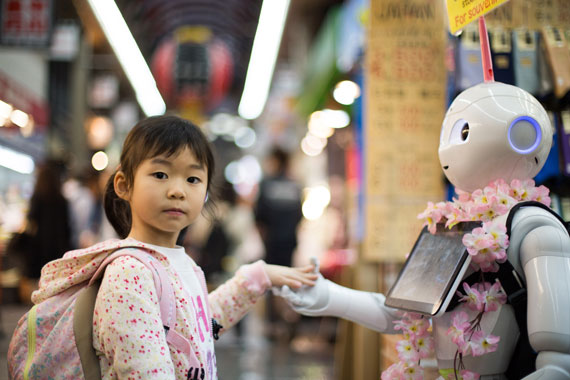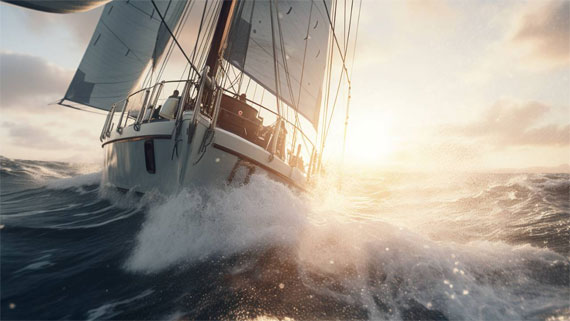The last few decades have witnessed dramatic shifts in the photography industry, evolving from the pure artistry of capturing the perfect shot to a domain replete with cutting-edge technology. This evolution was ignited by the introduction of Photoshop, and today, it is being further accelerated by artificial intelligence (AI) and synthetic photography.

Photo captured by Andy Kelly
The Photoshop Revolution
The launch of Adobe Photoshop in 1989 was a monumental leap for the world of photography. This game-changing software moved image manipulation into the digital realm, opening up an expansive universe of creativity and innovation.
Before Photoshop, photographers had to strive for perfection during the actual shoot, with only limited ability to modify the result afterwards. Image retouching and editing were labor-intensive tasks, usually involving a darkroom, chemicals, and skilled hands. Photoshop made these processes significantly easier and more accessible, giving photographers the power to alter reality, create visual illusions, and artistically enhance their images at the click of a button.
One of the key ways Photoshop revolutionized the industry was through democratizing access to image editing. Anyone with a computer could now potentially learn and practice sophisticated photo manipulation techniques. Photoshop became a linchpin in industries ranging from fashion to advertising, from journalism to fine art, giving birth to new roles and professions, such as graphic designers and digital artists.
Moreover, Photoshop initiated a critical dialogue about the ethics and authenticity in photography, challenging the age-old saying, “the camera never lies.” The power to manipulate images to such an extent stirred debates about the representation of reality in photography, altering our understanding of photographic truth.
The AI and Synthetic Photography Paradigm Shift
While Photoshop was a transformative force in the late 20th century, the advent of AI and synthetic photography in the 21st century is redefining the boundaries of the photography industry yet again.
AI-driven algorithms can now automate many of the tasks previously performed by photographers and photo editors. These tasks include adjusting lighting and color balance, recognizing and tagging subjects, enhancing image quality, and even composing an image or predicting the best moment to capture a shot. AI has also given rise to ‘computational photography’, a field that uses algorithms to enhance or extend the capabilities of digital photography.
Synthetic photography, on the other hand, pushes the envelope even further. It involves the creation of realistic images purely from digital or virtual elements. Artists and photographers can now fabricate a scene in three dimensions, set the lighting and weather conditions, pose their virtual subjects, and snap a photo—all within a virtual space. It’s a brave new world that significantly blurs the line between what’s real and what’s artificial, giving creatives an unprecedented level of control and flexibility.
However, just like with Photoshop, these technological advancements also come with ethical considerations. The ability to generate hyper-realistic images synthetically can have implications on truth and deception in visual communication. Moreover, as AI starts to automate more tasks, the industry needs to redefine the roles of photographers and image editors, adding a layer of complexity to the discussion about AI and job displacement.
Conclusion
From Photoshop’s democratization of image editing to AI’s automation of photographic tasks and synthetic photography’s creation of virtual worlds, the evolution of photography has been extraordinary. Each technological leap has not only expanded the creative possibilities for photographers and artists but also sparked valuable discussions about the ethics of image manipulation and the future of the profession.
As we move further into the age of AI and synthetic photography, it’s crucial to navigate these technologies responsibly, acknowledging their potential while being mindful of their ethical implications. In doing so, we can ensure that photography remains a powerful medium of authentic artistic expression and storytelling in the digital age.
For Further Understanding of Synthetic Photography:
This brings us to the just released Synthetic Photography Masterclass, designed by Phil Steele, a veteran in the field of photography education. With over 13 years of experience in teaching online photography and a deep-seated passion for technology, Phil is ideally placed to guide students into the new era of synthetic photography.
The course is not aimed to replace traditional photography but to supplement it, offering photographers an additional and complimentary art form that expands the horizons of their creativity. The course focuses on improving real-world photography skills through practice in a virtual environment, offering the chance to test-drive photo ideas, capture rare scenes, and expand one’s creative possibilities.

The Synthetic Photography Masterclass introduces you to the concept of synthetic photography, helps you gain a firm understanding of the underlying technology, and provides you with the skills required to create synthetic images. This knowledge and the skills acquired will, in turn, keep you at the forefront of this exciting new art form.
Utilizing the powerful generative AI engine, Midjourney, the course equips students with the know-how to create stunning synthetic images. The course includes ten video lessons that cover everything from setting up your Midjourney account to the advanced techniques required to produce photorealistic images.
Launch sale ending soon: The Synthetic Photography Masterclass at 40% Off
- - - - - - - - - - - - - - - - - - - - - - - - - - - - - - - - - - - - - - - - - - - - - - - - - - - - - - - - - - - - - - - - - - - - - - - - - -
Did you appreciate this newsletter? Please help us keep it going by Joining Our Patreon Supporters
What are your thoughts on this article? Join the discussion on our Facebook Page
PictureCorrect subscribers can also learn more today with our #1 bestseller: The Photography Tutorial eBook
- - - - - - - - - - - - - - - - - - - - - - - - - - - - - - - - - - - - - - - - - - - - - - - - - - - - - - - - - - - - - - - - - - - - - - - - - -
The post From Photoshop to AI: Evolution of the Photography Industry appeared first on PictureCorrect.
from PictureCorrect https://ift.tt/p64WeuB
via IFTTT






0 kommenttia:
Lähetä kommentti